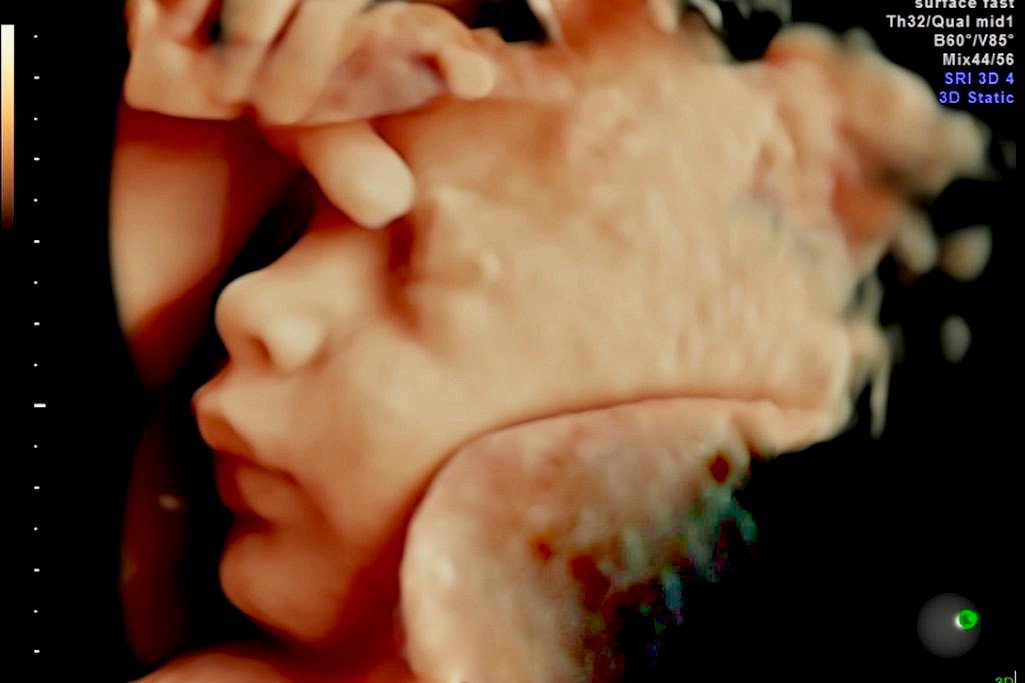In the months since the Dobbs v. Jackson Women’s Health Organization U.S. Supreme Court decision that ended the decades-long abortion regime established by Roe v. Wade, pro-choice activists have trotted out their usual arguments in support of elective abortion.
From “without abortion, women can’t have equality with men” to “sometimes a disabled child is better off not being born,” we’ve heard them all, amplified by the secular press and tacitly supported by pro-choice politicians. Many of the arguments rely on the hope that even in this advanced scientific age, when embryology has long settled the matter, voters can be convinced that the “products of conception” removed from the uterus during an abortion is not really a human being.
Standing in the way of success in this endeavor are some things which, as a radiologist who performs fetal ultrasounds on a regular basis, are my bread and butter: The black and white images taped to the refrigerator doors of proud grandparents and excited aunts everywhere are produced in offices like mine.
In our quiet examining rooms, mothers with only slightly rounded bellies lie back and look, trembling, at the screen. When the ultrasound transducer touches down, the blur on the screen resolves and displays, usually, thankfully, a little living son or daughter, who carry in their tiny selves the future dreams and hopes of the parents who love them.
On the screen, sloping profiles and rounded bellies are easy for most to recognize, as are the little waving limbs. I can make out the liver and tiny kidneys, the black dot of a full bladder, the vertebral bodies that stack up so beautifully. I can see the embryonic heart at only four weeks after conception, the prize that we look for.
The whole reason we perform these early ultrasounds is to find out if the baby is alive. Too often a little being barely trembles on the threshold of life, only to be called away by his or her creator. When I see the red and blue doppler focus that is the blood rushing to and fro in the fetal heart, I breathe a sigh of relief. Here is a young human person who is very small but very much alive, and soon I will dictate into the medical chart: “Single live intrauterine gestation, with a fetal heart rate of 145 beats per minute.”
In our broken culture, the forces arrayed against life — these young lives especially — are vast and richly equipped: They seem to work hard at preventing their conception in the first place, from the vilification of the natural family as just another oppressive power structure, to the drive for 100% employment of women, to the building of an economy where children are so expensive to bring up that they’ve become a luxury for the rich.
Papering the country with contraception, including long-acting hormonal devices like IUDs, is an effective tactic if you think of humanity as a plague that threatens to overwhelm the planet. And yet, babies continue to be conceived against the odds, though fewer and fewer of them.
To promote the abortion of the little ones on my ultrasound screen, whose throbbing heartbeats fill the room with sound when we turn up the speaker volume, abortion activists dehumanize them as nonpersons. History is full of examples of this kind of despicable behavior. But the science, the facts, the images and sounds, are all against those who say it’s not a heartbeat, just “cardiac pulsations” and that the sound that fills the room is “manufactured.”
So they move on to truly bleak ideas, like the assertion that a pregnant woman is a kind of body donor, sacrificing herself to save another, like you might sacrifice a kidney for a stranger. And that it’s just too much to ask of a woman, and that she should be celebrated when she rids herself of that encumbrance.
This argument, like the one that dehumanizes the fetus, is equally distant from the vastness of human experience. A pregnant woman is not “donating her body to save another person.” She is gestating a son or daughter, and just like all mammals she is predisposed by millenia of evolutionary events to protect and nurture, without which impulses the human race would have long since died out.
Some may decry this vivid reality and wish it were otherwise, but nature in her wisdom has made a mother much more than an unwilling, unwitting incubator — and an embryo much more than a fingernail or a tumor. Anyone who has been born of woman and been blessed by mother-love can see these arguments for what they are.

